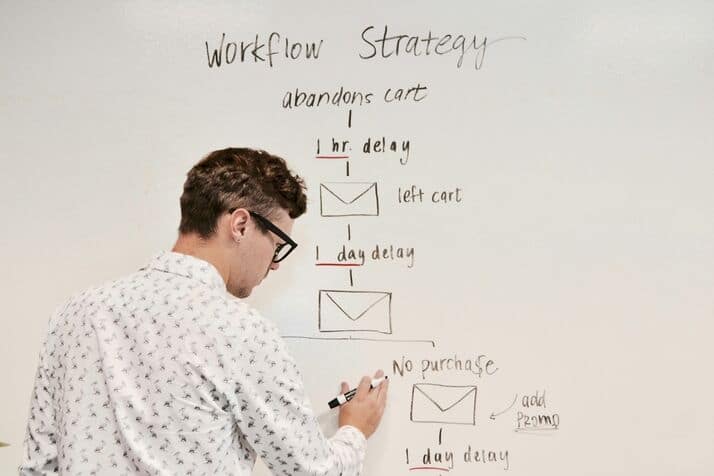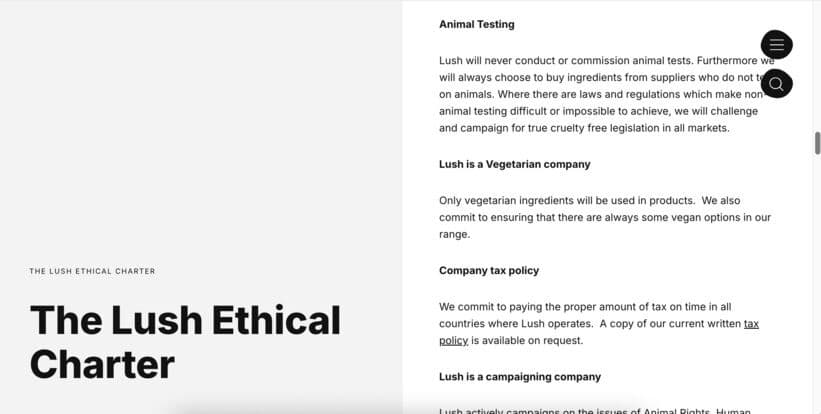
Email automation is a game-changer for those businesses that want to save time and increase conversions.
Email automation will help engage your audience, create more leads, and drive extra sales with minimal effort. Whether new to email marketing or looking to optimize your current campaigns, these email automation best practices will give you a solid foundation for success.
In this article, you’ll find five actionable email automation best practices that will save you time and increase engagement for higher conversions, enabling you to create a more effective and efficient email marketing strategy.
What Is Email Automation?
Email automation is an effective means of reaching out to customers with timely and personalized messages. Most email platforms offer pre-built automated workflows that allow businesses to send targeted emails over a certain period.
This approach significantly enhances customer engagement and increases the likelihood of conversions compared to sending a single, isolated email.
Email automation’s main benefit is sending timely, targeted emails to the right individual. Key components of email automation include:
1. Personalization
Using data to create email content that best suits the individual interests, behaviors, and interactions with the brand helps in more effective and efficient communication.
2. Triggers
Triggers include specific actions or events, such as a customer signing up for a newsletter, making a purchase, or abandoning a shopping cart, which start an automated email sequence.
3. Workflows
Workflows are automated sequences of emails that automatically guide a user through a customer journey, such as onboarding new customers, reactivating inactive subscribers, or nurturing leads.
RELATED POSTS
- 9 LEAD NURTURING STRATEGIES TO CONNECT WITH YOUR CUSTOMERS
- 9 EMAIL MARKETING BEST PRACTICES FOR SMALL BUSINESSES
- 19 PROVEN ABANDONED CART EMAIL SUBJECT LINES THAT BOOST SALES
- 13 SUCCESSFUL DRIP CAMPAIGN STRATEGIES TO MAXIMIZE RESULTS

What Are the Benefits of Email Automation?
Email automation is one of the cornerstones of modern digital marketing. It’s user-friendly, easily scalable, and incredibly flexible, making it suitable for various applications, from email marketing campaigns to transactional emails.
Here are a few reasons why you should start using automated emails as part of your business strategy:
1. To streamline your workflow
Automatically send out welcome emails or abandoned cart reminders by automating these repetitive email tasks with the help of an automation platform.
2. To drive sales and revenue
Nurture leads and boost conversions with targeted email sequences that help move your customers through the sales funnel.
3. To improve customer retention
Increase customer loyalty and repeat business through timely, personalized emails for customers based on their behaviors and preferences.
4. To foster stronger customer relationships
Build deeper connections with your audience by sending personalized emails that demonstrate understanding and care.
Common Types of Email Automation Campaigns
Email automation saves you time and helps you connect with your customers and grow your sales. You can use automation tools to send automated emails for any scenario you can think of.
Here are some examples of automated emails that drive results for your business:
1. Welcome emails
Welcome emails are sometimes the first emails sent when a subscriber to a newsletter or opens a new account. They introduce your brand and establish long-lasting relationships with new subscribers.
Effective welcome emails produce long-term benefits such as increased sales and customer retention. They could be part of a series of emails focused on deepening customer interaction over time.
2. Abandoned cart emails
An abandoned cart is when a customer adds products to their online shopping cart and exits the website without paying for those products.
Abandoned cart emails are one of the most potent tools for recovering lost sales. They remind customers about their unfinished purchases and incentivize them to complete the transaction.
3. Birthday emails
Birthdays are an excellent opportunity to surprise and delight your customers. With a bit of personalization, you can create memorable email experiences that drive engagement and loyalty.
4. Reactivation emails
It is inevitable that, over time, subscribers lose interest in your email content. For such subscribers, try to win them back by implementing re-engagement email campaigns. Some of the efficient strategies are:
- Welcome back offers
- Customer feedback surveys
- “We’ve missed you” emails
Reactivation emails are extremely powerful in re-approaching customers who have grown inactive.
Using automation allows personalization in such a way that re-engagement among your audience and customer loyalty are boosted.
5. Onboarding emails
Onboarding emails help customers start the buying journey. You can introduce your product or service to new customers through a sequence of automated emails, arm them with helpful resources for better engagement, and encourage them to sign up.
This can lead to increased customer satisfaction, loyalty, and revenue.

Take Your Emails to the Next Level
MailDrip helps you automate your outreach, nurture leads, and grow your brand with ease. Send the right message at the right time—without the stress.
Sign Up FreeNo Card Required

High-Converting Email Automation Best Practices
In today’s digital age, email marketing remains a powerful avenue for an enterprise to reach its audience and drive conversions.
By implementing these five practices, you can significantly enhance the effectiveness of your email campaigns.
1. Craft compelling subject lines to boost open rates
The email subject line is the first part of the email your customer will read, making it a crucial method to optimize open and click-through rates. You should be intentional with every word in your emails’ subject lines.
The subject lines should be carefully drafted to grab the reader’s attention immediately. The recipients must be so intrigued that they are forced to open your email.
You do not get second chances in subject lines; a weak subject line will keep the customer scrolling through their inbox even if the email contains helpful information.
Creating a compelling subject line might seem difficult, but you only need a few words.
For instance, trigger words can make less interesting subject lines more fascinating. As the name would suggest, trigger words are strong, influential words that can make your customer perform a certain action. They are used to incite specific human emotions or behavior, and when used correctly, they can make all the difference in your email marketing campaigns.
2. Boost engagement with personalized email content
Customers receive a large number of emails each day from all sorts of places, making it easy for them to feel overwhelmed. A sure way to pique the interest of such a customer is to make them feel special. Who doesn’t want to feel special?
Email personalization lets you write carefully to meet a specific audience’s needs. You are advised to mention the recipient’s name in various places in the body of the email, including the subject line. This will help you create an impression of familiarity and trust in the customer’s mind.
Your customers are more likely to buy into an email message when they feel like they are reading a message from a friend. Personalizing your email content is a potent trick that will help you increase your campaign’s email marketing conversion rates.
3. Drive desired actions with strong call-to-action (CTAs)
CTAs are an effective means of improving conversion rates. A study conducted by Wordstream reported that emails featuring one CTA can bring about a 371% increase in sales and 1617% in sales.
Strategic placement is key to ensuring that CTAs boost conversions. If you want your email subscribers to do something, just ask them with a relevant CTA.
The standard guideline is to begin with an action verb and keep your call to action brief. Words that tell your subscribers what they need to do, such as “Register,” “Buy,” “Order,” and “Start,” are standard. Alternatively, you can use less generic phrases like “Get XYZ” instead of “Buy” and “Give us a try” instead of “Sign up.”
If your goal is to increase engagement and stir communication between you and your email subscribers, avoid CTAs like “Comment,” “Reply,” or “Post.” Instead, use encouragingly personal ones like “Talk to Us.”
4. Strengthen brand reputation with social responsibility
Another smart way of converting more prospects is to leverage real-time social issues and state your social mission. After all, 70% of consumers say they want to know what the brands they support are doing to address social and environmental issues.
When constructing your social responsibility-focused email sequence, include the following information:
- introduction of the chosen social issue
- explain why it’s important and urgent to care about it.
- share the steps your company is taking to battle the issue
- link to additional resources, such as your blog content and other organizations addressing the issue
Take Lush’s example as inspiration for an email campaign focused on social responsibility. Note the special connection between their products and values.

5. Build trust with customer testimonials
The desire to see results is a human propensity that you should take advantage of. Buyers are more likely to make purchases after reading reviews from other happy customers.
Your email marketing conversion rates will significantly rise if you include testimonials in your newsletters.
However, you should include one or two testimonials in your emails rather than stuffing them into every paragraph. Most importantly, the testimonials you include should be relevant to the customer so they can relate to it and be motivated to take action.
Conclusion
Email is the perfect medium for engaging customers and helping them convert at different stages of the sales funnel. Optimizing email content can ultimately increase conversions.
Before creating your email marketing campaign, here is a recap:
- The subject line is your first impression! Intriguing, active words will help to grab attention. Trigger words can add emotion and urgency, significantly boosting open and click-through rates.
- Personalization will make emails feel personal, thereby increasing engagement. Mention the recipient’s name at strategic places and frame content that speaks to their specific needs. This builds familiarity and trust, making the email more impactful.
- Clear, directive CTAs will instruct and tell readers what to do next to complete the conversion process. Use short phrases beginning with action verbs and make CTAs appealing.
- Showcase your brand’s efforts on social or environmental issues. Educate readers on the cause and outline your contributions. This approach builds emotional connections and loyalty with your audience.
- Use relevant customer testimonials to demonstrate your product’s value and build credibility. Keep them concise to inspire trust and motivate action.
Having learned some of the best high-converting ideas, you should refrain from sending emails for sending sake.
You can drive conversions to your online store by implementing these tips in your email marketing automation.
Are you ready to implement these strategies? Use MailDrip for your email automation and watch your conversions increase.
READ MORE: 5 MUST HAVE EMAIL AUTOMATION WORKFLOWS FOR CREATORS

